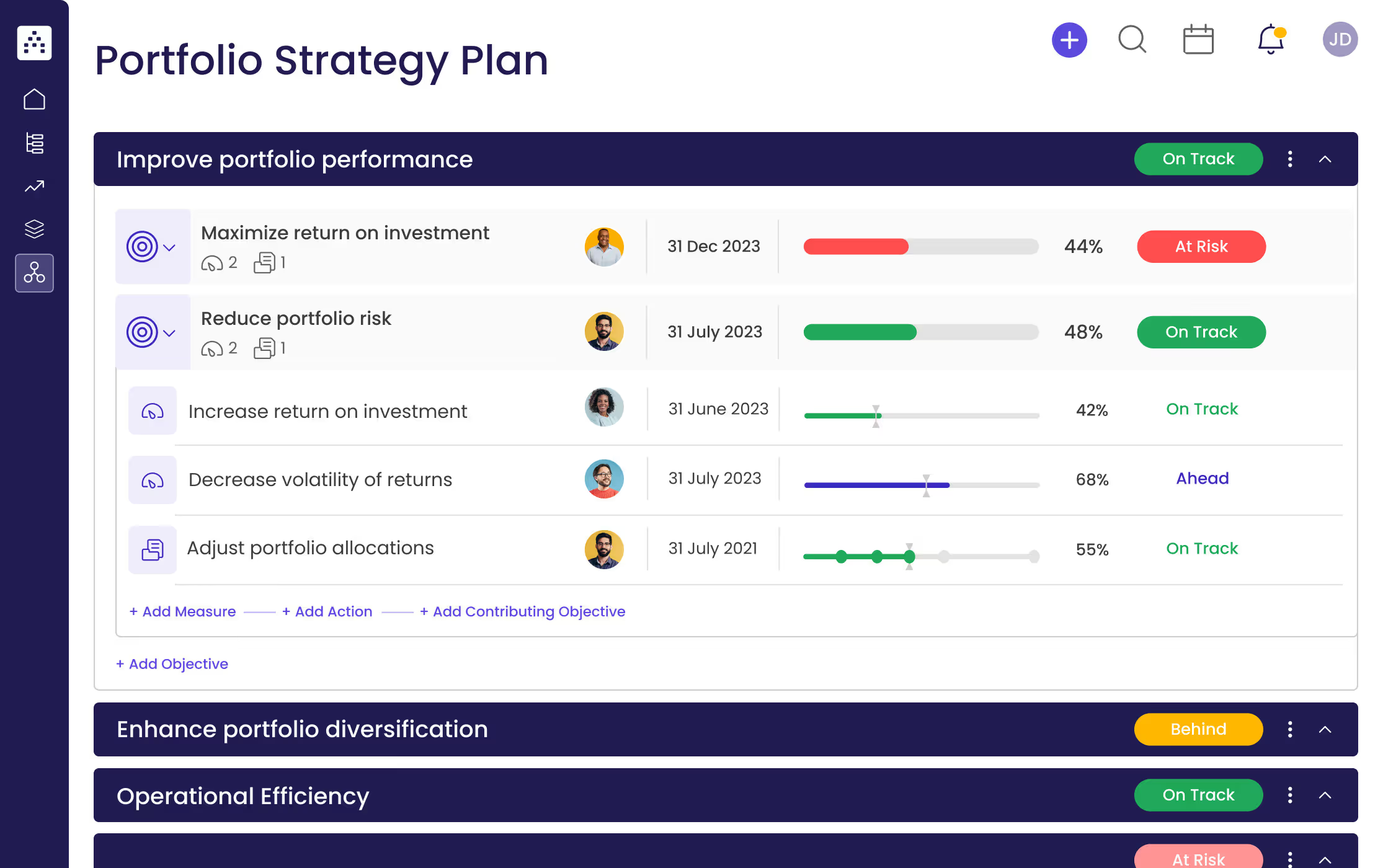What is a Portfolio Strategy?
A portfolio strategy is a plan for organizing investments in order to best achieve desired goals. It is a way to systematically evaluate and manage the risk, return, and diversification of a portfolio. It is important to know your risk tolerance and have a plan for how you will allocate your assets in order to maximize the potential of your investments.
What's included in this Portfolio Strategy template?
- 3 focus areas
- 6 objectives
- 6 projects
- 6 KPIs
Each focus area has its own objectives, projects, and KPIs to ensure that the strategy is comprehensive and effective.
Who is the Portfolio Strategy template for?
This Portfolio Strategy template is designed to help business teams create strategies to optimize the performance of their portfolios. It is a tool to help businesses organize and manage their investments in a way that is tailored to their goals and needs. It can also help to reduce risk and ensure that portfolios are diversified in order to maximize returns.
1. Define clear examples of your focus areas
A focus area is the broad area of focus of a portfolio strategy. Examples of focus areas could include improving portfolio performance, enhancing portfolio diversification, or monitoring portfolio performance. Each focus area should include a set of objectives and related projects that are designed to help achieve the desired outcomes.
2. Think about the objectives that could fall under that focus area
Objectives are the specific goals or outcomes that you are trying to achieve. They should be measurable and have a target that can be used to track progress and determine if the objective has been met. Examples of objectives could include maximizing return on investment, reducing portfolio risk, or increasing asset diversity.
3. Set measurable targets (KPIs) to tackle the objective
Key Performance Indicators (KPIs) are measurable targets you set in order to track progress against a specific objective. They should be quantifiable and have an initial value and a target value that you can use to measure progress. Examples of KPIs could include increasing return on investment, decreasing volatility of returns, or increasing accuracy of portfolio records.
4. Implement related projects to achieve the KPIs
Projects (or actions) are the steps you will take in order to achieve the desired KPI. They should be specific, measurable, and achievable. Examples of projects could include adjusting portfolio allocations, balancing portfolio allocations, or investing in different asset classes.
5. Utilize Cascade Strategy Execution Platform to see faster results from your strategy
The Cascade Strategy Execution Platform helps organizations create, execute, and track the progress of their portfolio strategies. It provides an intuitive and powerful interface to create and manage portfolio strategies and measure progress against KPIs. It is designed to help organizations see faster results from their strategies, and to ensure that they are on track to meet their objectives.


